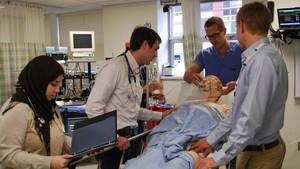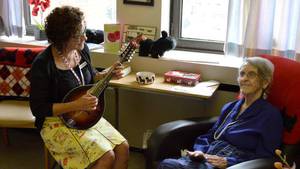On a quiet floor at the QEII Health Sciences Centre stand four sizable freezers set to a frigid -80°C. Enduring this deep freeze, some for over a decade, are in excess of a thousand tumours.
This so-called “tumour bank” was founded in 2005 as a lung tumour bank by Dr. Drew Bethune, medical director of the Provincial Cancer Program and Dr. Zhaolin Xu, QEII lung pathologist. Maintained to the exacting standards of the Canadian Lung Tumour Registry Network and filled with tissues from Maritime patients, it now stands among the largest and most comprehensive lung tumour bank of its kind in the country.
“This bank is basic, fundamental research infrastructure,” says Dr. Bethune, explaining that good, innovative research on the diseases of our day is as dependent on well-documented samples as it is on lab equipment, funding or expertise. This bank, and its tissues, can and have been used to study the progress of problematic tumours in a variety of cases and settings, aided by the medical histories of their donors. This allows inevitably for more informed treatments and accurate prognoses.
“Having this resource enhances our ability to attract good clinicians and do cutting-edge research,” he says.
As this bank has evolved, its potential above and beyond tumours of the lung has become apparent. For years its founders have been building support for an expansion of this tumour bank into a general “biobank” to collect and store a plethora of tumour, tissue and fluid samples, along with personal health information from voluntary participants.
Among these pioneers, especially active in the last three years, are doctors Bethune, Xu, Sidney Croul and Irene Sadek, department head of Pathology and Laboratory Medicine.
“The point of this project is to leverage our experience and build on the success of our lung tumour bank, expanding its reach to all tumours and tissues,” says Dr. Sadek. “This will be the first biobank of its scale in Atlantic Canada.”
As explained by Dr. Croul, this project will bring together several existent — albeit smaller — banking enterprises across the QEII into a single, unified, standardized whole.
“A biobank is more than just putting a specimen in a freezer,” says Dr. Bethune, highlighting the necessity of institutional support and professional relationships in expanding the bank. “There’s a whole framework involved.”
With recent funding from the QEII Foundation, the generous support of a community of donors will help move cancer care forward by accelerating life-saving research and enabling Atlantic Canadians access to cutting-edge therapies.
While the value of this biobank-in-the-making to the region can’t be overstated, its founders hope to inspire other Atlantic provinces to follow suit.
“We’re hoping to be the seed which encourages other Maritime centres to develop their own biobanks so we can have a larger network,” says Dr. Sadek. “This would be valuable infrastructure, allowing us to perform research and develop innovative understandings of these diseases, as well as innovative treatments.”
The QEII’s biobank will enable the development and delivery of new cancer therapies and improve diagnostic tools for those facing a cancer diagnosis.








